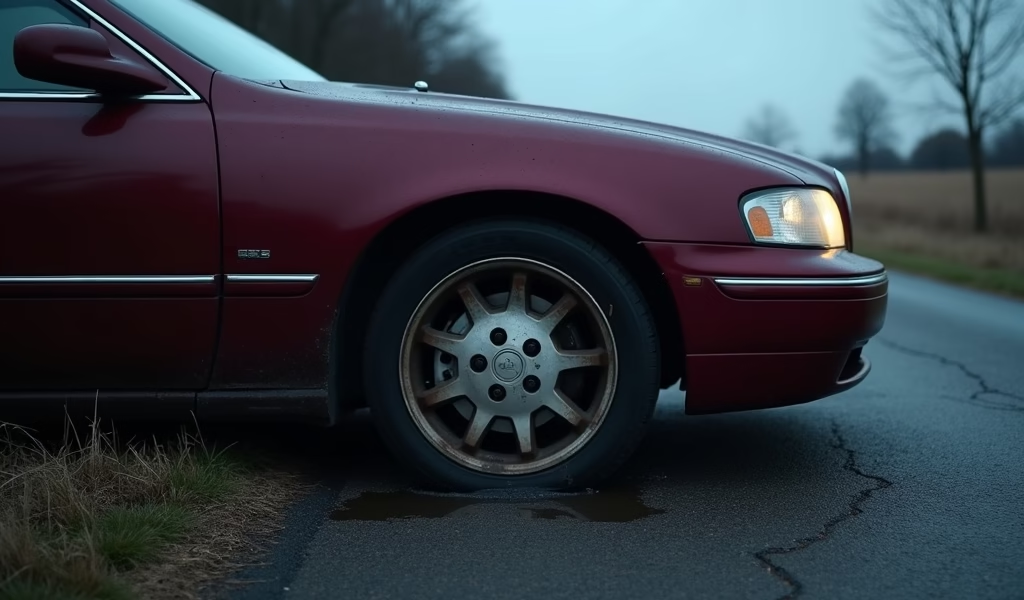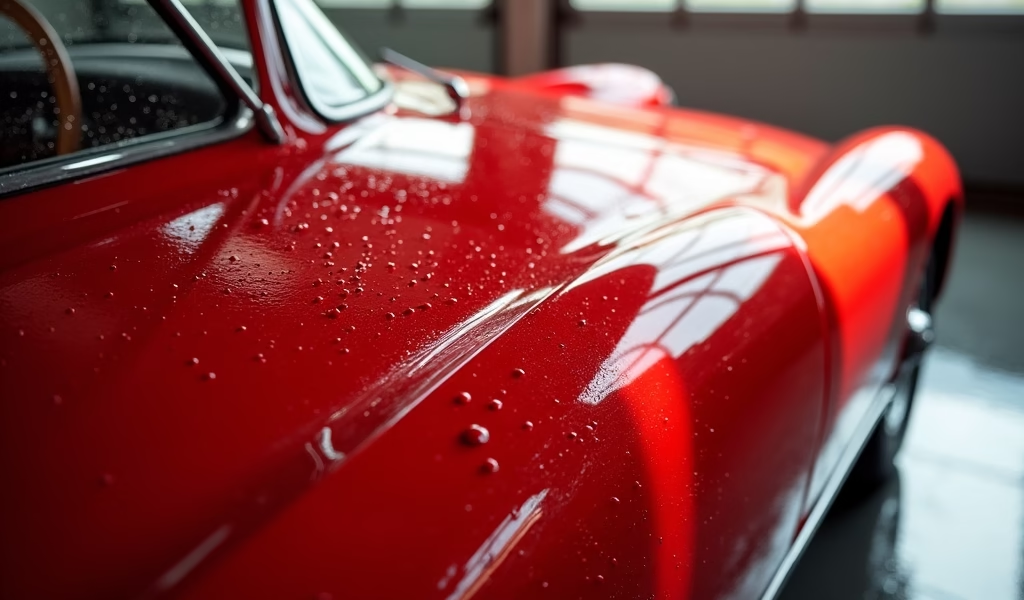Overview
This article details five essential maintenance tips for car links—critical suspension components that affect vehicle handling, safety, and longevity. It emphasizes regular inspection, proper lubrication, alignment checks, quality replacement parts, and professional maintenance as key practices to extend component life and prevent costly repairs.
Table of Contents
- Understanding Car Links: The Backbone of Your Vehicle’s Suspension
- Signs of Failing Car Links: What to Watch For
- Tip 1: Regular Inspection – The First Line of Defense
- Tip 2: Proper Lubrication – Keeping Things Moving Smoothly
- Tip 3: Alignment Checks – Ensuring Optimal Performance
- Tip 4: Quality Replacements – Investing in Your Vehicle’s Future
- Tip 5: Professional Maintenance – When to Call in the Experts
- Conclusion: Maintaining Car Links for Vehicle Longevity
- Frequently Asked Questions
Understanding Car Links: The Backbone of Your Vehicle’s Suspension
Car links play a crucial role in your vehicle’s suspension system, yet they remain one of the most overlooked components in routine maintenance. As a professional mechanic with over 15 years of experience, I’ve seen countless vehicles suffer from premature wear and handling issues due to neglected car links. These humble parts—sometimes called control arms, tie rods, or sway bar links—form the vital connections between your vehicle’s frame and suspension components.
Think of car links as the silent heroes of your driving experience. Every time you cruise over a pothole without spilling your coffee or take a corner with confidence, you’re benefiting from properly functioning car links. They work tirelessly to maintain wheel alignment, absorb road vibrations, and ensure that your steering remains responsive and predictable.
The beauty of car links lies in their apparent simplicity. Most consist of a metal rod or arm with rubber or polyurethane bushings at each end, sometimes incorporating a ball joint. But don’t let this simplicity fool you—these components endure tremendous stress while coordinating your vehicle’s movements through various road conditions and driving scenarios.
Today, I’m sharing five proven maintenance tips that will help extend the life of your car links, improve your vehicle’s handling, and potentially save you thousands in costly repairs down the road. Whether you drive a compact sedan, a robust SUV, or anything in between, these tips apply to virtually all modern vehicles on the road.
Signs of Failing Car Links: What to Watch For
Before diving into maintenance tips, let’s talk about how to recognize when your car links might be showing signs of wear. Your vehicle has a way of communicating its needs, and recognizing these signals early can make all the difference.
The most common indicator of failing car links is unusual noise. Listen for knocking, clunking, or popping sounds, especially when driving over bumps or making turns. These noises often result from worn bushings or loosened connections within the link assemblies. Unlike engine noises that might vary with RPM, suspension noises typically correlate with road conditions and vehicle movement.
Another telltale sign is unpredictable handling. If your vehicle pulls to one side, wanders on straight roads, or feels unstable during cornering, your car links could be compromised. Pay particular attention to how your steering wheel feels—excessive play or a tendency to return to center unevenly often points to worn tie rod ends or control arm bushings.
Uneven tire wear provides another valuable clue. Inspect your tires regularly for scalloped edges, cupping, or unusual wear patterns. These issues often stem from alignment problems caused by compromised car links. According to Tire Rack’s comprehensive research, irregular tire wear can reduce tire lifespan by up to 30% while decreasing fuel efficiency.
Visual inspection might also reveal physical damage. Look for torn rubber bushings, visible cracks in the link components, or leaking fluid from ball joints. Any of these conditions warrant immediate attention, as they compromise both handling and safety.

Tip 1: Regular Inspection – The First Line of Defense
The cornerstone of effective car link maintenance is regular, thorough inspection. I recommend examining your suspension components every 10,000 miles or at least twice a year. This simple habit can help you catch minor issues before they escalate into major problems.
Start by parking your vehicle on level ground with the wheels pointed straight ahead. Ensure the car has cooled down if you’ve been driving. Safety comes first, so never inspect underneath a vehicle supported only by a jack—always use proper jack stands if you need to access the undercarriage.
During your inspection, focus on these key areas:
- Control arm bushings: Look for cracks, splits, or oil saturation in the rubber components
- Ball joints: Check for excessive play or movement when the suspension is loaded
- Tie rod ends: Examine for looseness or torn boots that could allow contaminants inside
- Sway bar links: Listen for rattling and look for worn bushings
- Mounting brackets: Inspect for cracks, rust, or loosened bolts
If you’re not confident performing this inspection yourself, most repair shops offer free or low-cost suspension checks. Many vehicle-specific maintenance guides also provide detailed inspection procedures tailored to your exact model.
Remember, vehicles operated in harsh conditions—whether that’s extreme temperatures, unpaved roads, or areas with heavy road salt use—require more frequent inspections. These environments accelerate wear on car links and their associated components.
One inspection technique I particularly recommend involves using a pry bar (carefully!) to check for movement in control arm bushings. With the vehicle safely supported, apply gentle pressure to the control arm and observe for excessive play. Any movement greater than 1/16 inch typically indicates wear that warrants attention.
Tip 2: Proper Lubrication – Keeping Things Moving Smoothly
While many modern car links come with “lifetime” lubrication, this term can be somewhat misleading. In reality, regular lubrication significantly extends component life, especially for vehicles over five years old or those with higher mileage.
Not all car link components require lubrication. Rubber bushings, for instance, are designed to function dry. However, ball joints and certain types of tie rod ends benefit tremendously from periodic greasing. Consult your vehicle’s service manual to identify which components have grease fittings (sometimes called Zerk fittings) that allow for lubrication.
When lubricating, choose the right product for the job. Most suspension components work best with a lithium-based grease with molybdenum disulfide additives for extreme pressure protection. These formulations provide excellent adhesion and water resistance, crucial for components exposed to road spray and environmental contaminants. The National Lubricating Grease Institute provides excellent guidance on grease selection for automotive applications.
The lubrication process itself requires attention to detail. Clean the grease fitting thoroughly before attaching your grease gun to prevent introducing dirt into the joint. Pump the grease slowly until you see the old grease being pushed out from under the dust boot. This indicates that fresh lubricant has fully penetrated the joint.
For vehicles without serviceable grease fittings, focus instead on keeping the protective boots intact. These rubber or plastic covers prevent contaminants from reaching the pre-lubricated components inside. If you notice torn or cracked boots, replacing the entire assembly is typically the best approach for long-term reliability.
Tip 3: Alignment Checks – Ensuring Optimal Performance
Wheel alignment and car link condition share an intimate relationship—each profoundly affects the other. Misaligned wheels put undue stress on car links, while worn links make it impossible to maintain proper alignment. This is why I strongly advocate for alignment checks after hitting significant potholes or curbs, and at least annually for vehicles driven in areas with challenging road conditions.
During an alignment, a technician adjusts the angles of your wheels to match manufacturer specifications. These precise measurements—camber, caster, and toe—determine how your tires contact the road surface. Even slight deviations from optimal settings can accelerate wear on both your tires and suspension components.
What many drivers don’t realize is that a proper alignment check doesn’t just measure angles—it also assesses the condition of suspension components. A good technician will examine car links, struts, and other components before making adjustments. If components are worn, they’ll recommend replacements before proceeding with alignment, as no adjustment can compensate for mechanical wear.
Consider alignment checks as preventive medicine for your vehicle’s suspension system. A typical four-wheel alignment costs between $100-200, while replacing multiple worn car links could easily exceed $500-800 in parts and labor. The math clearly favors proactive maintenance.
I recommend requesting a printout of your alignment results for your records. This documentation helps track gradual changes over time and can alert you to developing suspension issues before they become obvious through handling problems or tire wear.

Tip 4: Quality Replacements – Investing in Your Vehicle’s Future
When the time comes to replace car links—and eventually, it will—the quality of replacement parts becomes critically important. In my decades working on vehicles, I’ve witnessed the false economy of choosing bargain-basement components all too often.
While OEM (Original Equipment Manufacturer) parts typically offer the best fit and durability, they also come with premium pricing. Fortunately, several high-quality aftermarket manufacturers produce components that meet or sometimes exceed OEM specifications at more reasonable price points. Brands like Moog, TRW, and Delphi have earned solid reputations among professional mechanics for their consistent quality and reasonable pricing.
What makes a quality car link? Several factors deserve your attention:
- Materials: Look for forged steel components rather than cast or stamped alternatives
- Bushings: Polyurethane offers greater durability than rubber, though it may transmit more road noise
- Ball joints: Sealed designs with proper pre-loading will outlast cheaper options
- Corrosion protection: Quality powder coating or galvanization significantly extends component life
- Warranty coverage: Better manufacturers stand behind their products with meaningful guarantees
When replacing car links, always replace them in pairs (left and right sides) even if only one shows obvious wear. This maintains balanced handling characteristics and prevents uneven stress distribution across the suspension system.
It’s also worth considering upgrading to heavy-duty components if you frequently drive on rough roads or carry heavy loads. According to research from SAE International, properly matched suspension components can improve vehicle stability by up to 18% under challenging conditions.
Remember that proper installation is just as important as component quality. Torquing fasteners to manufacturer specifications using a calibrated torque wrench prevents both under-tightening (leading to loosening) and over-tightening (causing stress fractures).
Tip 5: Professional Maintenance – When to Call in the Experts
While I encourage vehicle owners to develop maintenance awareness and basic inspection skills, certain aspects of car link maintenance benefit tremendously from professional attention. Knowing when to seek expert help represents a form of wisdom, not a lack of capability.
Professional technicians bring specialized tools, diagnostic equipment, and experience that simply aren’t available to most home mechanics. For instance, accurately diagnosing ball joint wear often requires a dial indicator and loading fixtures that can cost hundreds of dollars—tools that make little economic sense for occasional use.
Consider professional evaluation in these scenarios:
- After significant impacts (curbs, potholes, minor collisions)
- When experiencing persistent handling issues despite basic maintenance
- For pre-purchase inspections of used vehicles
- When unusual noises from the suspension area persist
- Before long road trips or demanding driving conditions
When selecting a repair facility, look beyond the hourly rate. A slightly higher labor cost often correlates with better training, superior equipment, and more thorough work. Ask potential shops about their approach to suspension work, their parts suppliers, and their warranty policies.
Many quality shops now offer digital inspection reports with photographs highlighting current component condition and potential concerns. These visual records prove invaluable for tracking gradual wear and making informed maintenance decisions. Don’t hesitate to request this type of documentation.
Even with professional maintenance, stay engaged in the process. Ask questions about wear patterns, expected service intervals, and preventive measures specific to your vehicle model. This collaborative approach between owner and technician typically yields the best long-term results for vehicle maintenance.
Conclusion: Maintaining Car Links for Vehicle Longevity
Proper maintenance of car links represents one of the most effective ways to preserve your vehicle’s handling characteristics, safety profile, and overall longevity. These components may not command the attention of engines or transmissions, but their influence on your driving experience and safety cannot be overstated.
By implementing the five proven tips we’ve discussed—regular inspection, proper lubrication, alignment checks, quality replacements, and professional maintenance when needed—you’ll significantly extend the service life of your suspension components while maintaining optimal vehicle performance.
Remember that suspension maintenance follows the classic adage: an ounce of prevention is worth a pound of cure. The modest investment in regular inspection and maintenance pays dividends through improved handling, extended tire life, and the avoidance of costly cascading failures that often begin with neglected car links.
Take pride in maintaining these critical components. Your vehicle will reward you with responsive handling, predictable road manners, and the quiet confidence that comes from driving a properly maintained automobile. And perhaps most importantly, you’ll enjoy the peace of mind that comes from knowing you’ve done everything possible to ensure your vehicle remains safe and reliable for the road ahead.
Has this guide helped you understand the importance of car links in your vehicle’s suspension system? I’d love to hear about your experiences with suspension maintenance and any questions you might have about keeping your car running smoothly for years to come.
Frequently Asked Questions
What exactly are car links in a vehicle’s suspension?
Car links are components that connect your vehicle’s frame to suspension parts like wheels and axles. They include control arms, tie rods, sway bar links, and other connecting parts that allow controlled movement while maintaining proper alignment.
How often should I have my car links inspected?
Inspect car links every 10,000 miles or twice yearly, whichever comes first. Increase frequency if you drive on rough roads or in harsh weather conditions.
What are the warning signs of failing car links?
Listen for clunking or knocking sounds over bumps, watch for uneven tire wear, and pay attention to handling issues like pulling to one side. Visual inspection may reveal torn boots, damaged bushings, or leaking fluid from ball joints.
Can I replace car links myself?
While technically possible with proper tools, replacing car links requires experience with suspension components and alignment knowledge. DIY attempts should only be made by those comfortable with moderate to advanced mechanical work.
Are aftermarket car links as good as OEM parts?
Quality aftermarket brands like Moog, TRW, and Delphi often match or exceed OEM specifications at lower prices. Avoid bargain-basement options as they typically use inferior materials and construction methods.

